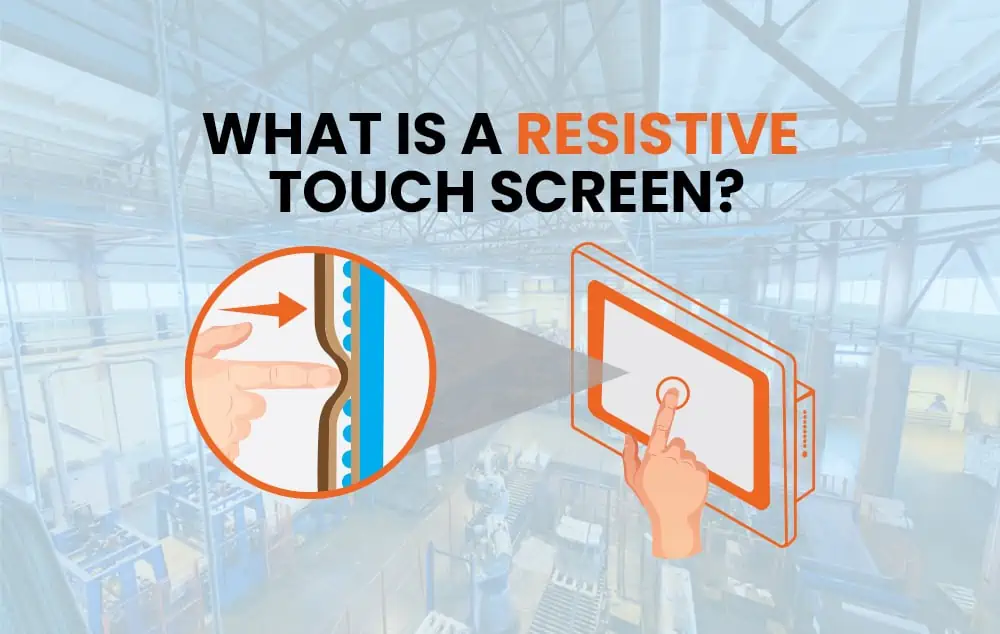
What is a Resistive Touch Screen?
In straightforward terms, a resistive touch screen is a type of touch-sensitive computer display that responds when pressure is applied. It’s constructed from two transparent sheets coated with resistive material, separated by a tiny air gap. When you touch the screen, these sheets come into contact, and their horizontal and vertical lines determine the precise touch location. Notably, this technology doesn’t require an internal power source and instead relies on electromagnetic energy transmitted from an RFID reader.
How Does a Resistive Touch Screen Work?
Resistive touch screens operate by recognizing physical pressure. When you touch the screen with your finger, a stylus, or any object, it pushes the two resistive sheets together, creating an electrical connection. This contact is then registered as input. This simplicity makes resistive touch screens cost-effective and versatile, as they can respond to various touch signals.
Types of Resistive Touch Screens
There are two primary types of resistive touch screens:
1. Digital Resistive Touch Screen
Digital resistive touch screens operate on an X-Y matrix system. They respond to pressure from fingers, styluses, or even fingernails. This widespread application makes them suitable for a range of uses.
2. Analog Resistive Touch Screen
Analog resistive touch screens are designed for more specific applications, particularly those involving pen recognition. They offer higher resolutions and precision, making them ideal for tasks that require fine detail.
Advantages of Resistive Touch Screens
Resistive touch screens come with several advantages:
- Cost-Effective: They are budget-friendly, making them an attractive option for various applications.
- Easy Integration: These screens are straightforward to incorporate into different devices and systems.
- Versatile Touch Signals: Resistive touch screens can register input from various sources, including fingers, styluses, and gloves.
- Resistance to Environmental Factors: They are resistant to dust, moisture, and humidity, ensuring reliable performance in different conditions.
Drawbacks of Resistive Touch Screens
Drawbacks of Resistive Touch Screens
However, resistive touch screens have some limitations when compared to technologies like capacitive touch screens:
- Prone to Damage: Due to their reliance on physical pressure, they can be more susceptible to damage if not handled carefully.
- Limited Contrast: Resistive touch screens may have limited contrast levels, affecting the quality of visuals.
- Lack Multi-Touch Support: Unlike capacitive screens, they do not support multi-touch gestures.
In summary, a resistive touch screen is a practical and cost-effective touch-sensitive display technology that operates by registering physical pressure. Now, let’s explore some common applications where resistive touch screens excel:
Applications of Resistive Touch Screens
- Point of Sale (POS) Systems: Resistive touch screens are commonly used in POS systems because of their durability and ability to work with various types of input, including gloved hands or styluses. They are reliable in high-traffic retail environments.
- Industrial Control Panels: Industries often employ resistive touch screens in control panels for machinery and equipment. Their resistance to environmental factors makes them suitable for challenging conditions.
- Medical Devices: In the healthcare sector, resistive touch screens are used in medical devices and diagnostic equipment. Their precision is crucial in these applications.
- ATM Machines: Some ATMs still utilize resistive touch screens for user input due to their cost-effectiveness and durability.
- Kiosks and Information Terminals: Public kiosks and information terminals in airports, museums, and other public spaces often feature resistive touch screens for user interaction.
- Navigation Systems: Resistive touch screens are used in GPS and navigation devices because they can be operated with gloves, which is beneficial for outdoor use.
Whether you’re considering a resistive touch screen for your project or simply curious about this technology, understanding its basic principles and various applications can help you make informed decisions. If you’re looking for touch screen manufacturing services, consider reaching out to industry experts for guidance.
Remember, resistive touch screens have their place in various applications, offering reliable performance in specific scenarios where their characteristics shine.




